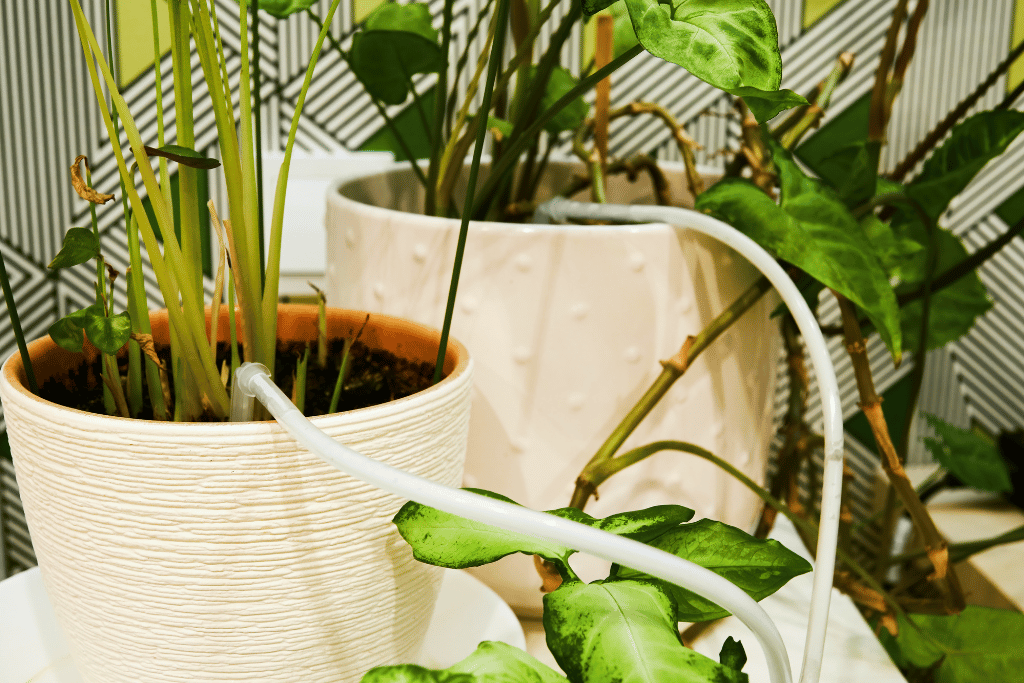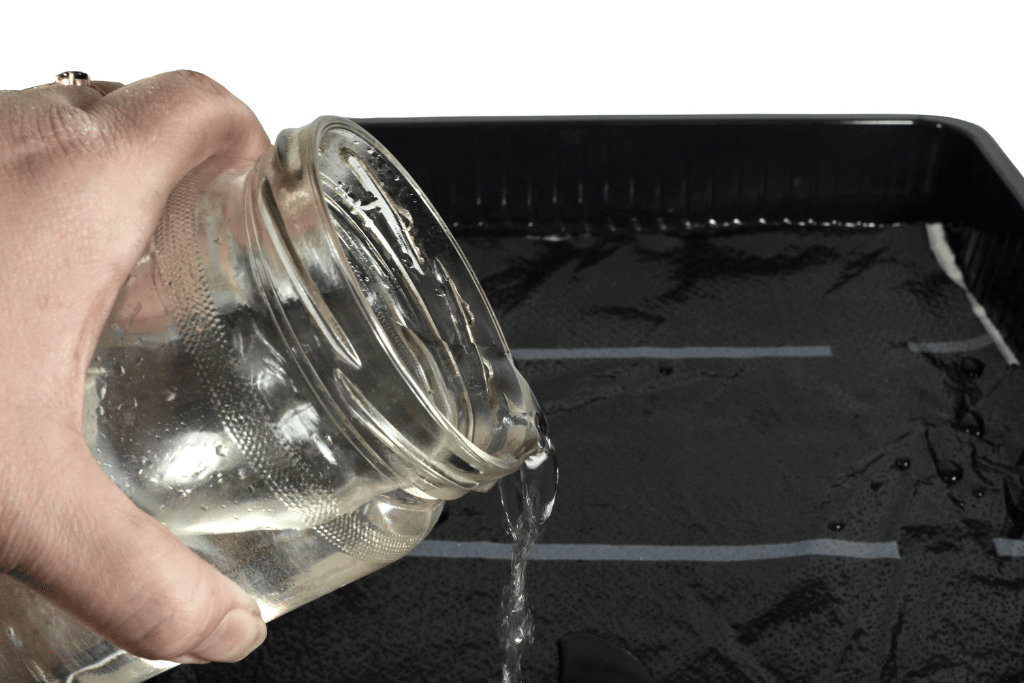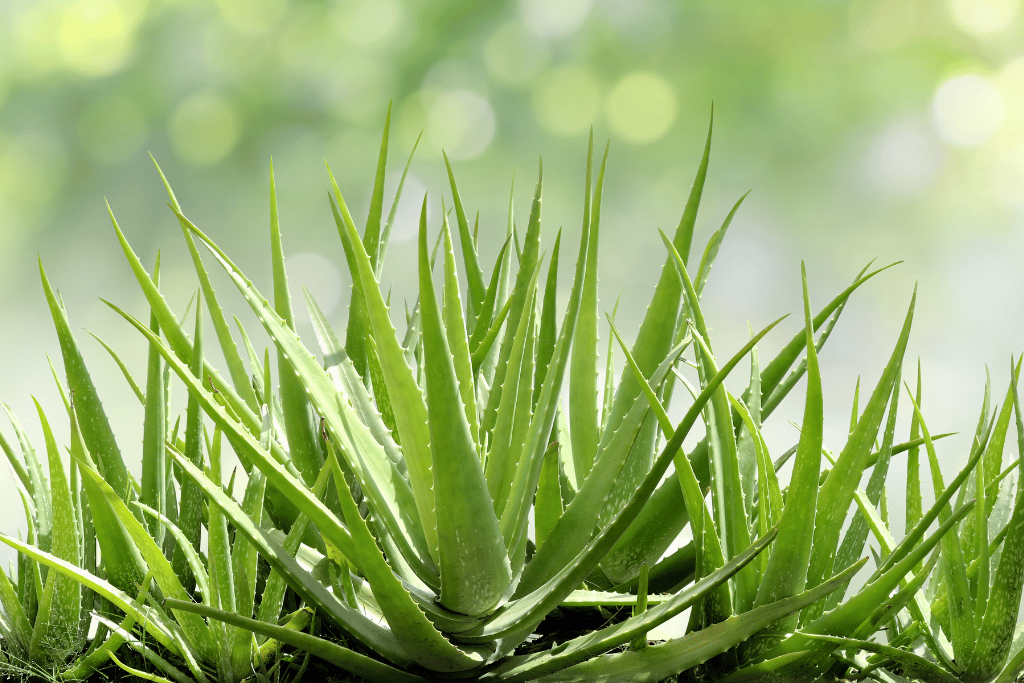
Are you a forgetful waterer or just getting a bit tired of watering your plants? Do you feel guilty when you come home late and see your plants looking sad and thirsty? Well, have no fear because automatic watering systems are here! These systems are a lifesaver for busy plant parents or anyone who wants to take the guesswork out of watering.
Automatic watering systems work by providing a consistent and controlled amount of water to your plants, helping them thrive without you having to lift a finger (except to set it up, of course!) The benefits of using these systems are endless, from saving time and effort to ensuring that your plants are getting the proper amount of water to grow strong and healthy.
However, with so many different types of automatic watering systems on the market, it’s important to choose the right one for your specific needs.
If you’re looking to step up your indoor plant care and ensure your plants thrive, then you’re in luck! Keep reading to explore the finest automatic watering systems currently available on the market.
Types of Automatic Watering systems
Drip Irrigation Watering System

These systems work by slowly and consistently releasing water directly onto the soil around your plant’s roots through small tubes or hoses.
The good thing about drip irrigation systems is they are very efficient as they drive water directly to the soil where your plant needs it most. This can help conserve water and save you money on your water bill. Plus, since the water is delivered slowly, it has time to soak into the soil and avoid runoff or puddling.
One of the potential drawbacks to consider is that they can be more difficult to install than other types of automatic watering systems. You may need to do some drilling or digging to set up the tubing hoses, which can be time-consuming and labor-intensive.
Additionally, since the water is delivered slowly, it may not be the best option for plants that require a lot of water quickly, such as those in hot, dry climates.
Overall, drip irrigation systems are a great option for indoor plants that need consistent, efficient watering. Just be sure to weigh the pros and cons before deciding if it’s the right system for you and your plants.
Capillary Watering Systems

Another type of automatic watering system is the capillary mat system. These work by using a mat or a fabric that wicks water up from a reservoir and into the soil of your plant’s pot.
One of the main benefits of capillary mat systems is that they are very easy to use and require minimal installation. Simply place the mat on a surface and fill the reservoir with water, and you’re good to go. They also provide consistent and even moisture to your plants, which can help prevent over or underwatering.
However, there are a few cons to consider as well. Capillary mat systems may not be suitable for all plant types, especially those that prefer a drier soil environment. They also require regular monitoring to ensure the mat is properly moist and that the reservoir is filled with water. On top of that, capillary mat systems may not be the most visually appealing option as the mat and reservoir can be quite large and bulky.
To sum this up, capillary mat systems are a great option for beginner plant parents or anyone looking for a low-maintenance way to water their indoor plants. Just be sure to consider the needs of your specific plants before making the final decision.
Self-Watering Pots

Self-watering pots have become an increasingly popular option for automatic watering solutions. The pots feature a reservoir of water beneath the soil, which is drawn up by the plants’ roots as needed.
One of the key features of self-watering pots is that they are incredibly easy to use and require minimal maintenance. You can simply fill up the reservoir and let the pot do the rest! They are also a great option for those who tend to overwater or underwater their plants, as they provide consistent and even moisture.
One area where self-watering pots fall short is that they can be quite expensive compared to other types of watering systems, so they may not be the best option for those on a budget. Another thing is that the reservoir may need to be refilled more frequently for larger plants or during hot and dry weather.
All in all, self-watering pots are a great option for anyone looking for a low-maintenance and foolproof way to water their indoor plants. Just be sure to consider the upfront cost and the needs of your specific plants before making a final decision.
How to Choose an Automated Watering System

Now that we’ve explored the different types of automated watering systems, let’s talk about some key factors to consider when choosing the right system for your indoor plants.
Size
First and foremost, it’s important to consider the size of your plants and pots. Larger plants and pots may require a more robust watering system, while smaller ones may do well with a simpler option
Soil and Watering Needs
The type of soil and watering needs play a large part in the type of automated watering system to choose. Some plants prefer a drier soil environment, while others need consistently moist soil.
Additionally, different types of soil may require different types of watering systems. For example, soil that retains moisture well may do well with a capillary mat system, whereas soil that drains quickly may require a drip irrigation system.
Cost and Installation
Cost and installation are also important factors to consider. Some automatic watering systems can be quite expensive, so weighing the cost against the benefits is important before making a decision.
What’s more, some systems may be more difficult to install than others. For example, when installing drip irrigation, you might need to dig or drill to fully connect it to your water supply, while a pot may simply require filling up a reservoir.
Maintenance
Lastly, it’s crucial to consider each system’s maintenance requirements. Some may require more monitoring and refilling than others, while some may require regular cleaning or replacement of parts. It’s important to consider your own personal schedule and level of commitment before choosing a watering system.
In my personal experience, I’ve found that the drip irrigation system works best for my larger plants, while capillary mats are great for my smaller ones. I’ve learned the hard way that it’s important to regularly monitor and refill the reservoir in my self-watering pot to prevent root rot.
As the saying goes ‘an ounce of prevention is worth a pound of cure’- taking the time to choose the right watering system and maintaining it properly can go a long way in keeping your indoor plants healthy and happy!
Simplifying Indoor Watering with Automated Systems
Automatic watering systems can be a game changer when it comes to caring for your indoor plants. They offer a range of benefits, including consistent watering, reduced risk of over- or underwatering, and minimal maintenance requirements.
Consider factors such as size, cost, soil installation, and maintenance when choosing the perfect system for your needs. Based on these factors, my final recommendation would be to use a drip system for larger plants, capillary mats for smaller ones, and self-watering pots for those who want a low-maintenance option.
All in all, I highly encourage anyone who loves plants to try an automatic watering system. Not only can it make caring for your plants easier and more enjoyable, but it can also lead to healthier and more vibrant plants.
Do You Want to Impress Your Friends With Your Indoor Jungle?
Well, the search is over! Our website has everything you need to become a certified plant whisperer. Whether you are a total plant freak or a complete rookie, we’ve got planting tips, tricks, and tools that will take your plant care to a different level.
From the best automatic watering systems to DIY plant hacks, our website is your one-stop-shop for all things plants.
So what are you waiting for? Join the plant care revolution and take your indoor jungle to the next level!
FAQ About The Best Automatic Watering Systems
What is the best automatic watering system for indoor plants?
The best automatic watering system for indoor plants will depend on a variety of factors, including the size of your plants and pots, the type of soil and watering needs, cost, and maintenance requirements.
How do you automate watering indoor plants?
There are several ways to automate watering for indoor plants. One popular method is to use an automatic watering system, such as a drip irrigation system or a capillary mat system. These systems typically involve setting up a timer or a sensor to regulate the amount and frequency of water delivery to your plants.
What is the best self-watering system?
Depending on your specific needs and preferences. Some options include self-watering pots with built-in reservoirs, watering spikes that can be inserted into the soil, and wick watering systems that use a wick to draw up the water from a reservoir into the soil.
What is the disadvantage of automatic plant watering system?
While automatic plant watering systems offer many benefits, there are some potential disadvantages to consider. For example, some systems can be expensive to install and maintain. On top of that, if it’s not set up properly, automatic watering systems can lead to cover or underwatering, which will harm your plants.



